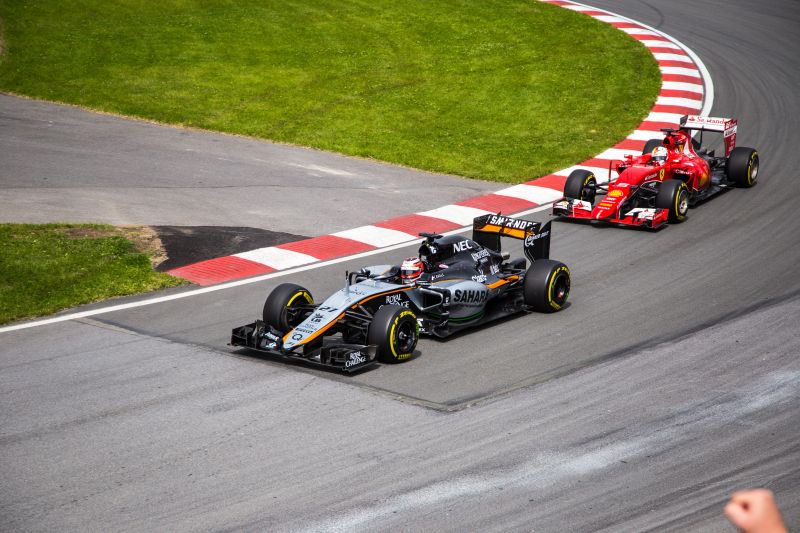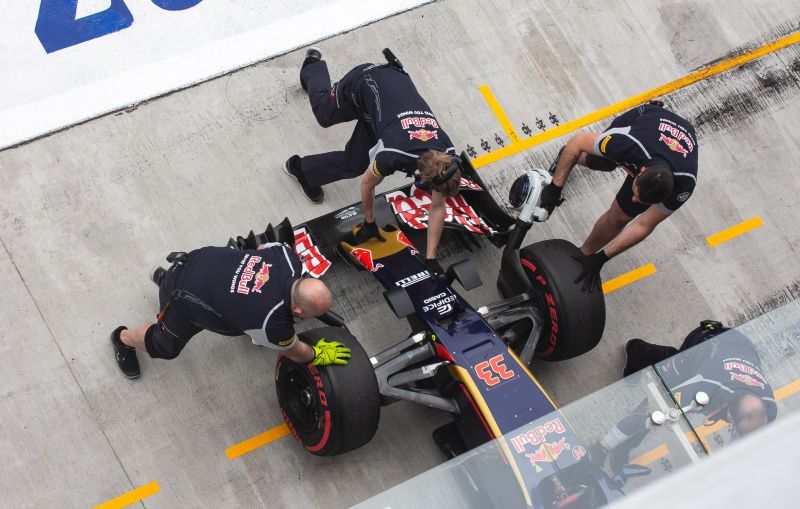
The Formula One season has been extended or shortened at various times. When the Formula One World Championship initially began in 1950, the season was much shorter and had a totally different format than it does today. Younger fans may be curious about the length of an F1 season, though, given the frequency with which regulations are updated.
So, how long is the F1 season? The F1 season has 20 to 22 races on average. The 2022 F1 season is the first one that will have 23 races, while there are also indications that the season of 2024 will have even 24 races. The racing season is held from March until late November, making it 9 months long.
With 23 events, the 2022 Formula One season is the longest in the series’ history. The season begins in March and ends in November, and the FIA has already announced that it will increase the number of events to 24 in 2023.
There have been a number of complaints from both teams and drivers over the Formula 1 season duration. A longer Formula One season is welcomed by many fans, but there are other parties besides them that feel the effects of this decision.
Table of Contents
How Long Is The F1 Season?
The length of a Formula One season ranges from 8 to 9 months, with the exact time frame dependent on the schedule of races. As of 2022, there’ll be 23 races in the Formula One championship, up from 6 in 1950.
The 2022 Formula 1 season will go down in history as the longest in the sport’s history, wrapping up in late November for the first time. The drivers and teams have spoken out against the speculation that Formula 1 will extend the season even more in the coming future.
If you want to know How Much Does an F1 Pit Crew Member Earn? (INTERESTING FACTS), click here.
While there are breaks between races, F1 teams and workers still have to keep a tight schedule and have little room for error when planning the logistics of traveling to and from events.
How Many Formula One Races Are There Each Year?

Typically, there are about 20 races in each F1 season, however, the 2022 season will have 23 races. When compared to the 16 races held in a typical F1 season in the ’90s, the average number of races held in a season has increased to roughly 20 in 2010.
Formula One seasons have anything from 20 to 22 races, depending on a number of circumstances. The Covid-19 pandemic has caused postponements of races in recent years, making predictions about the total number of races for the season difficult.
If you want to know What Is the Top Speed of an F1 Car? (AMAZING!!!), click here.
The 2022 Formula One season features 23 events, the highest number ever for the series. The crews and staff who give their best for the races to be at the highest level have voiced some grievances about this.
The FIA approved F1’s preliminary 24-race calendar for 2023 in February of this year, guaranteeing yet another record-breaking campaign. This shift was likely intended to make room on the schedule for the Chinese Grand Prix to make a comeback.
What Is the Time Difference Between F1 Races (And Why)?

The opening race of the Formula One season typically takes place at the end of March. The teams will participate in preseason testing at a course that has been chosen by the FIA. This track is often either the Circuit de Catalunya in Barcelona or the Bahrain International Circuit.
If you want to know What’s the Difference Between IndyCar and F1? (YOU DIDN’T KNOW), click here.
The interval between each of the competitions will be either one or two weeks, depending on how far the various locations are from one another and the amount of time needed for transportation.
As an illustration, the time difference between Spain, Circuit de Barcelona–Catalunya, and Monaco, Circuit de Monaco is one week between races, while the time between Canada, Circuit Gilles–Villeneuve, and Great Britain, Silverstone Circuit races is two weeks. That depends on how far the teams have to go with their vehicles and gear.
August is traditionally the month in which students have a three- or four-week long summer break, so we can see that same goes for Formula 1 events as well (jokes aside).
If you want to know Why Are F1 Cars Getting Bigger? (WHAT YOU DIDN’T KNOW), click here.
To prepare for the second half of the season, when the schedule tends to fill up more quickly as the sport makes its way from continent to continent (Europe, Asia, and the Americas), teams and drivers are required to take a time to relax.
The teams and drivers will have a shorter and shorter winter vacation after the final race of the season. Although the drivers don’t have to worry about building the following season’s car until March, the team’s manufacturing staff must set to work right away.
If you want to know How Much Does a NASCAR Car Cost? (IN DETAIL), click here.
The majority of teams start working on their next season’s car well in advance, and by January, they are nearing completion.
Is There Too Much Racing in One Year?

The 2022 season will be the longest ever in the sport’s history. A few people have voiced their displeasure with the season thus far, and it’s not just the drivers.
If you want to know Why Do F1 Cars Have Sidepods? (INTERESTING FACTS!!!), click here.
When the race is over, the work for the crew and Formula 1 staff is far from over. It is their job to break everything down, pack up the vehicles and equipment, and transport everything to the next event without a hitch. This will require them to be away from home for longer periods of time, which can be stressful.
There is little doubt that adding more races will increase the already high costs for the teams, in addition to the effects on the F1 workforce.
Note: Increasing the season length would incur additional expenditures, going against the budget limitation in a cost cap setting where teams are limited in the number of specific items they may employ throughout a season.
FAQ: Riders Also Ask
What Does A F1 Triple Header Mean?
In Formula One, a “triple header” is defined as three consecutive races held inside a three-week time frame. In contrast to the typical one-week break between races (or a two-week break between races if there were two races in the previous two weeks), a triple header consists of three consecutive race weekends.
There is little room for error while transferring vehicles and gear from event to event, making triple headers challenging for teams and drivers.
Note: When there are three races in a row, drivers can easily feel exhausted and stressed.
What Complications Can Be Associated with Extended Seasons?
A lengthier season doesn’t pose much of a problem for the drivers. A longer season does not necessarily make it harder for them to compete, despite the obvious fact that it means they have more competitions to participate in and fewer periods to prepare between events.
If you want to know What Are F1 Grid Penalties? (DETAILED EXPLANATION), click here.
However, the Formula 1 personnel has a lot more strain because of the longer seasons. For each Formula 1 race, the drivers and their teams must travel to the venue.
There may be repercussions for the technicians and engineers who devote countless hours to Formula 1 and who travel to 20 or more countries every year.
Another problem with the Formula 1 season is that the staff employees are working too hard and eventually become too weary to do their jobs.
Note: The majority of the labor that gets done is hidden from view, and if it’s done too frequently, it can be taxing on the individuals who make up the team. As a result, F1 seasons might not get any longer.
How Does Formula One Conduct Preseason Testing?
In Formula One, teams have 3 to 4 days of open testing before the season begins. Teams can run their vehicles through their paces before the first race of the season, allowing them to fix any serious problems with their new vehicles.
If you want to know What is Formula 1 DRS? (THINGS YOU DIDN’T KNOW), click here.
Since 2009, the FIA has strictly enforced a restriction on private testing, meaning that teams are not permitted to run their cars for development purposes outside of sanctioned events at any point during the season. Because teams with more resources could conduct more testing, this was done to level the playing field.
Before a new season begins, teams often drive their vehicles in what is called a “shakedown” before the formal tests begin.
Note: Outside of official FIA races, teams may only run 100 kilometers (approximately 62 miles) for trial and advertising reasons on days that are also designated as filming days. Getting the vehicles out on the track is always helpful, but it can’t replace actual testing.
What’s the Deal with Preseason Tests?
The Formula One teams can put their vehicles through their paces and make sure everything is in working order during preseason testing. As is the case with every new automobile, initial production problems are not uncommon.
Note: Maybe a group utterly botches the new ideas, and they’re far slower than planned, or maybe some of the design features have produced additional concerns, like dependability or malfunctioning.
The team can find these problems and, hopefully, address them in the weeks leading up to the start of the season if they take the time to analyze the vehicle beforehand. Each team is allowed to run as many preseason drills as they like within the allotted time.
If you want to know What Are The Best F1 Simulators? (ON THE MARKET), click here.
In General, How Long Does an F1 Race Last?
Approximately 1 hour and 50 mins are the typical length of a Formula One race. Distance is what determines how long a Formula 1 race is. At least 190 miles must be covered in each Grand Prix race with the exception of Monaco, which covers 162 miles.
If you want to know How Many F1 Drivers Have Died? (CHRONOLOGICAL), click here.
The best strategy to ensure that every Grand Prix is roughly the same duration is to have it set at 190 miles. Even though competitors still cover the same total distance, there is typically a large amount of variation in the number of laps that are completed throughout each race as a result of this factor.
Without any delays, a Grand Prix has to complete in less than 2 hours. The average length of a Formula One race was about 94 minutes in 2021.
Conclusion
Formula 1 s one of the most followed auto-moto sports and if you have ever seen any race, you definitely agree with me. This sport is pretty dynamic and fast and it can exhaust the drivers pretty much.
